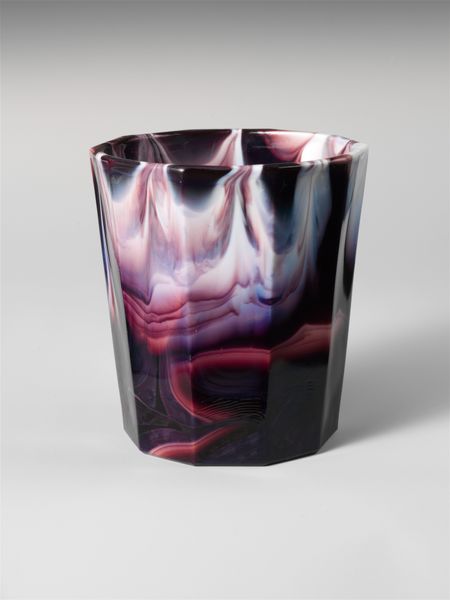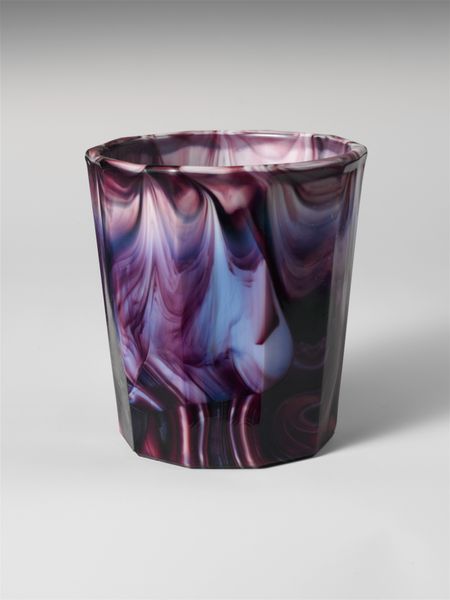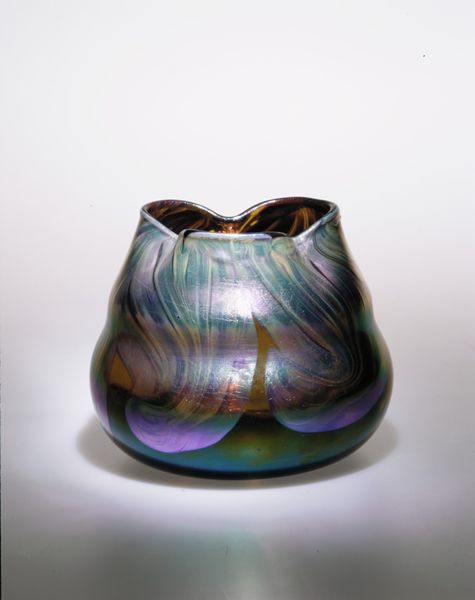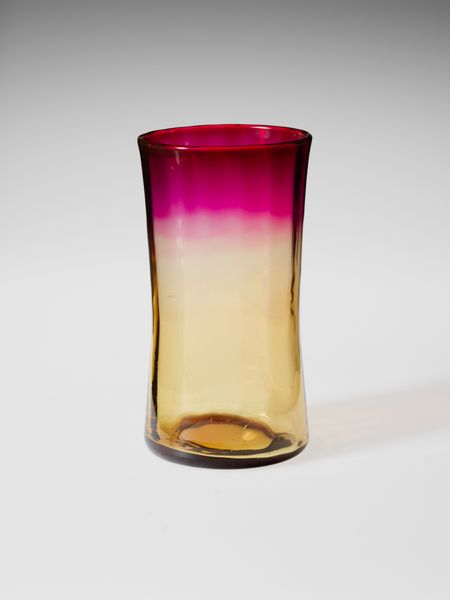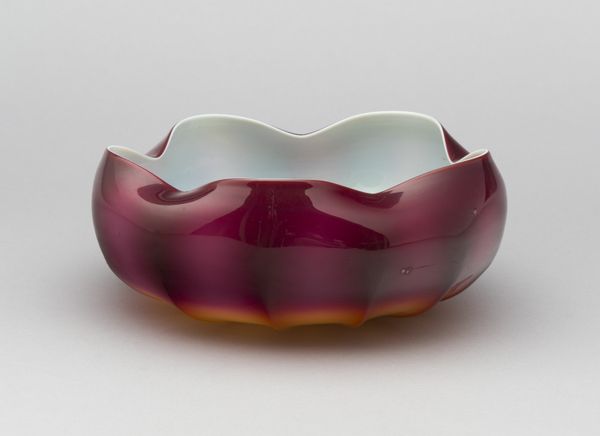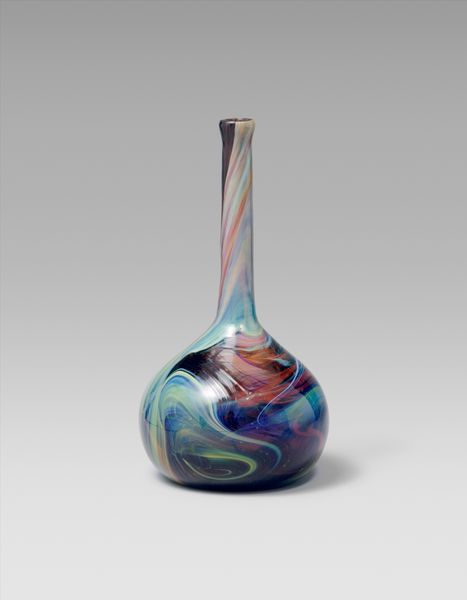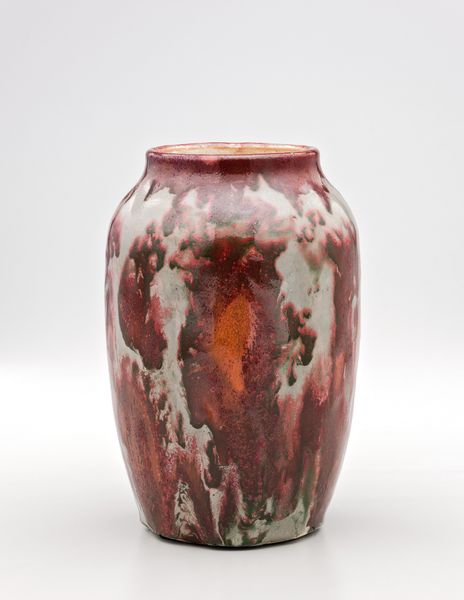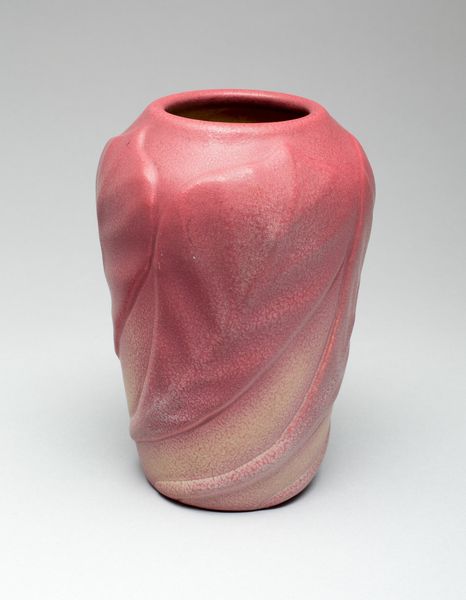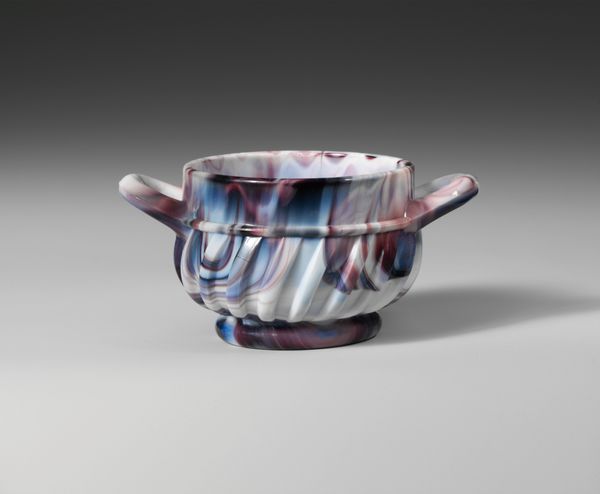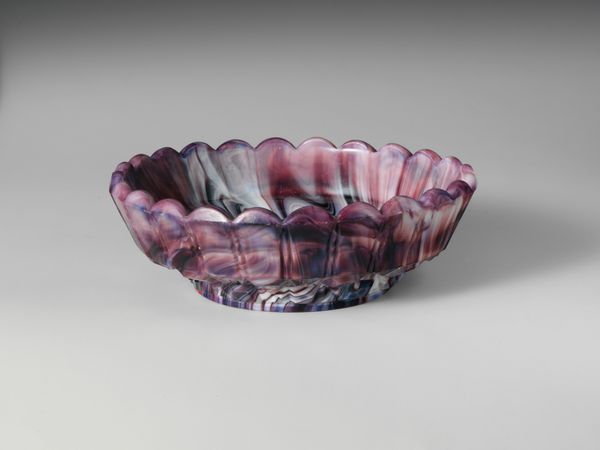
glass
#
product photograph merchandise
#
3d printed part
#
product fashion photography
#
virtual 3d design
#
glass
#
product design photgrpaphy
#
3d shape
#
geometric
#
white focal point
#
metallic object render
#
product mock up
#
united-states
#
product photography
Dimensions: H. 3 3/16 in. (8.1 cm)
Copyright: Public Domain
Curator: Right now, we're looking at a "Tumbler," crafted sometime between 1870 and 1890 by Challinor, Taylor, and Company. It resides here at the Metropolitan Museum of Art. Editor: Wow, it's…swirling. Like someone captured a galaxy in a glass. All those milky, deep purples against the stark white—it feels like a very dramatic tide pool. Curator: Indeed. The swirling effect comes from the way the glass was worked. This wasn't just any glass factory; Challinor, Taylor, and Company was a major player in the American glass industry, pioneering various techniques during that time. Editor: Techniques! What techniques? Tell me more. Because it makes you wonder what these techniques say about its role in society at that moment, you know? It’s so interesting to understand what the role of craftsmanship like this might have been in people's daily lives. Curator: Absolutely. Pressed glass production was really taking off around this period, and Challinor, Taylor and Company was known for producing large quantities of glassware with intricate molded patterns for a growing consumer market. So it's partly about industrial ingenuity making beautiful, functional objects available to more people. But it’s interesting, though, it seems not at the highest artistic achievement to our sensibility today... almost mass produced and vulgar with its overdone colorization and marble effect... Editor: You think so? But maybe that accessibility WAS the point. This object had to become accessible so people in more levels of social structure might appreciate. In fact, I almost see a bit of the beginning of Art Deco here—the geometric base and the extravagant coloring, not just purely functional at all. Curator: Well, either way, it invites you to look deeper into a booming era of American industrial art. What does ornament mean in a moment where things get to be both industrial but are attempting artistry? And it does this without screaming about it; its form is quiet, the visual play subtle enough for an everyday object. Editor: It is so fascinating. Even if you usually hate these type of things! You've convinced me. A tiny, domestic revolution swirling inside a simple drinking glass! Thanks for this look at "Tumbler." Curator: My pleasure. It seems both timeless, you know, a swirling meditation that remains appealing after centuries of our history. It just works.
Comments
No comments
Be the first to comment and join the conversation on the ultimate creative platform.
